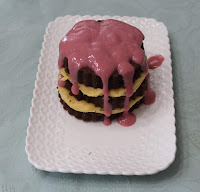I have been amply
fed during this Hunger Moon of
February, also known as
Little Famine Moon and Bony Moon by
Indigenous
American Indians.
I continue to have a pantry full of grains, beans and canned goods,
and a nearly full
chest freezer. This, in spite of the fact that I have
not food shopped in two months. It seems that technology has
supported me in planning ahead during gardening and foraging season,
such that I can eat home grown and preserved foods all year. I have
not been concerned with scarcity, and am grateful for all the time
and energy I devoted last summer and fall to processing food, and for
my solar panels that help keep that freezer running.
Lucky me.
Staying on Track-
Food Buying Moratorium Challenge
Since I don’t
enjoy grocery shopping, avoiding the process has been easy. However,
I was recently tempted to consider online shopping, lured by an ad
for two free chocolate bars with a $50 purchase, (dark chocolate with
cashew butter and raspberry jelly—a $16 value). As I started
perusing an enticing list of ingredients and products, I remembered
my food buying moratorium challenge to use up my food supplies and
frozen goods, and closed that window.
Never mind. I have
plenty of red lentils and kimchi to enjoy.
Inventorying
Surplus
I have been paying
more attention to assessing my stock of in-house ingredients,
figuring out what I should eat regularly, so that come May, I am not
subsisting on applesauce and acorns.
My frig hosts large
jars of pickled veggies, kimchi, fermented Asian greens, and
sauerkraut. I realize that it is time to start using some of this
up.
Thus, my creative
substitute for letuce- fermented greens and sauerkraut atop a
rice cake slathered with chipotle hummus. Pretty tasty as the
saltiness complements the bland rice cake.
Rearranging
Ingredients
Each week, I know I
am using up supplies, as my pile of reusable zip bags and empty jars
are piling up, but a strange
phenomenon is happening. In spite of emptying containers, my frig and
upstairs freezer oscillate between near empty and overflow. It seems
I am rearranging ingredients, aerating them, and ending up with even
more edible food than I started with. Like the fountain of youth,
this seems to be the fountain of never-ending food…
Adaptations to
Moratorium Rules
Tho’ I have not
shopped, I have bartered, and accept that this is within the
parameters of my challenge.
My son
enthusiastically received my bucket of unprocessed acorns, and
generously refilled the tub with carrots, sweet potatoes, onions, and
hazelnuts.
Who came out ahead
in this exchange?!
As I have been
milk-less for a couple weeks, the hazelnuts came in handy to make nut
milk.
How to make nut
milk
Drain and discard water.
Blend nuts with 2-4 cups water until almost smooth. Use less water for thicker milk.
Strain the blended nut mixture using a tight-weave cloth, twisting the top tightly to squeeze out more milk.
Refrigerate. The milk will keep in the refrigerator for 3-4 days.
Using Leftover Nut Pulp
You
can freeze it to later toss into smoothies, or fold it into
quick-bread batters or pancakes, or warm oatmeal.
Yum-
yum










